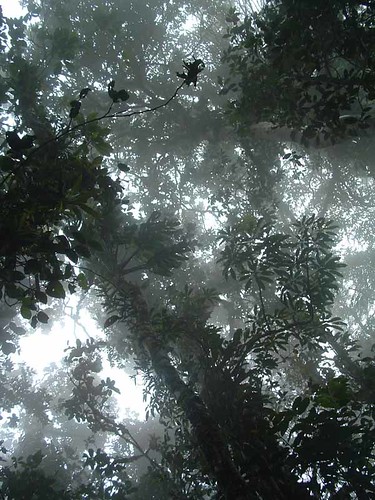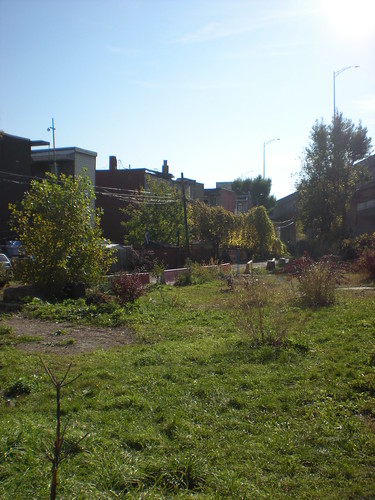
I’ve been running around this week, interviewing some people about the creative ways that they use public – or not so public – space for an article to appear in Spacing magazine. Biking between the Turcot yards, a Mile-End Meadow, and an East-end quarry, I began to have flashbacks to a tropical ecology course in Panama, back when I was doing my bachelor’s in Environmental Science.
For one lab report, we sought out a clearing where a massive, 40-m tropical trees had toppled over, leaving behind a gap in the dense rainforest canopy. Then we set about cataloging the environmental conditions and biological diversity within the gap.
When an old tree falls down, sunlight hits the forest floor for the first time in decades and conditions suddenly become ideal for smaller grasses and leafy plants. These “pioneer species” take root and flourish for a while, but eventually become overwhelmed by taller bushes, palms and trees that cast the forest floor into shadow once again. A few decades later, one tree will manage to out-compete its fellows – taking up most of the soil nutrients and blanketing the gap with its canopy. (This massive tree will also provide homes for thousands of other living things like vines, orchids, insects and birds). By that time the pioneer species will be long gone and spot will once again reach it’s “climax growth.” Its a very micro-scale version of ecological succession.
One the reasons that tropical rainforests are so famous for their biodiversity is that gaps are always being created and filled in somewhere or other. Climax communities and pioneer species exist side by side.
This lot between St-Henri duplexes and a tentacle of the Turcot Interchange feels a bit like one of those gaps. With no external plan for the land, the local community has crept in. The field is surrounded by colourfully painted concrete blocks, hosts a swing-set, and is used by local residents for weekly bar-b-q’s during the summer. Another local example is the parc sans nom in the Plateau, home to a community pizza oven, a semi-legal St-Jean-Baptiste party, and – until recently – exhibits and movie projections by artist collective Dare-Dare.
These places are constantly on the brink of disappearing. Any day, community organizers warn, the shared space will be taken over by parkinglots, condos, new road developments, or even city parks. Perhaps this is as inevitable as a tree spreading its leaves under the sunlight. After all, isn’t the ephemeral quality of these places part of what makes them feel so precious? Aren’t city-sanctioned graffiti walls, picnic areas, and skate-parks a little less beloved than their rogue counterparts?
Perhaps the municipal government and private developers are like the dominant trees that will eventually fill in the gaps in the canopy. But these “dominant species” are not the only actors at play: citizen actions and community groups are the pioneers who will creep into un-used spaces and make them livable.
They have an equally valid role to play in maintaining a diversity of activities and spaces available to us and – in order to foster our collective resilience – they should be encouraged. This isn’t something we can ask city planners to do for us any more than grasses in the jungle can ask a towering tree to push over. It is something that has got to come from the bottom up.
A little further on in my lab book, this phrase sticks out “In biological conservation, we seek to preserve the capacity for evolution.” Now how does this apply to cities?
Photos: above Panamanian Cloud Forest by Alexandra Gaudreau (January 2003). Below lot behind Village des Tanneries by Alanah Heffez (Oct 2008)


One comment
Great post. Brilliant of you to make those links between the real jungle and the concrete jungle. The idea that gaps are where new life flourishes is an important one, and is something that our otherwise seamless notions of progress tries to erase. Thanks!